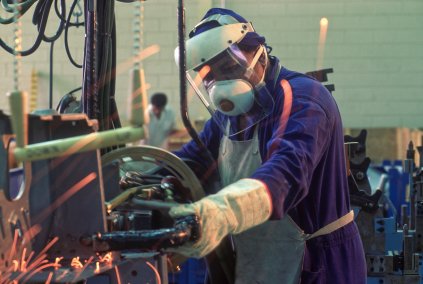
Comfort and protection with PBI NRG LP
Workers in textiles, steel and wood sectors are particularly at risk of exposure to carcinogens.

29th November 2017
Innovation in Textiles
|
Brussels
Cancer is the leading cause of work-related deaths in the EU. Annually, 53% of occupational deaths are attributed to cancer, compared with 28% for circulatory diseases and 6% for respiratory ones. The most common types of occupational cancer are lung cancer, mesothelioma (caused by exposure to asbestos particles) and bladder cancer.
The new rules will particularly benefit workers in the construction sector, chemical, automotive, woodworking and furniture industries, manufacturers of food products and textiles, the healthcare sector and hospitals.
Occupational exposure limits, i.e. the maximum quantity of harmful substances that workers can be exposed to, have been set for:
The new legislation also revises exposure limits for two substances already on the list: hardwood dusts (produced by cutting or pulverising wood), and vinyl chloride monomer (mainly used to produce PVC).
Employers will have to identify and assess risks to workers who are exposed to these substances and take preventive measures. MEPs ensured that the Commission will have to assess the possibility of including reprotoxic substances, i.e. those having effects on sexual function and fertility, in the dangerous substances list by the first quarter of 2019.
The new rules also lay down that the national authority responsible for the health surveillance of workers may decide that health surveillance must continue after the end of exposure, for as long as needed to safeguard health.
“I am incredibly happy that the EU has finally revised the carcinogens and mutagens directive. It took over ten years of pushing to get a more ambitious agenda. Workers need to know they are protected and that companies are not competing on the basis of their health. The EU needs a stronger social agenda, and this is a good start. Cancer is the biggest workplace killer and we are going to continue to fight it,” said Rapporteur Marita Ulvskog, S&D, SV.
The directive was approved by 540 votes to 6 against, with 119 abstentions.

Business intelligence for the fibre, textiles and apparel industries: technologies, innovations, markets, investments, trade policy, sourcing, strategy...
Find out more